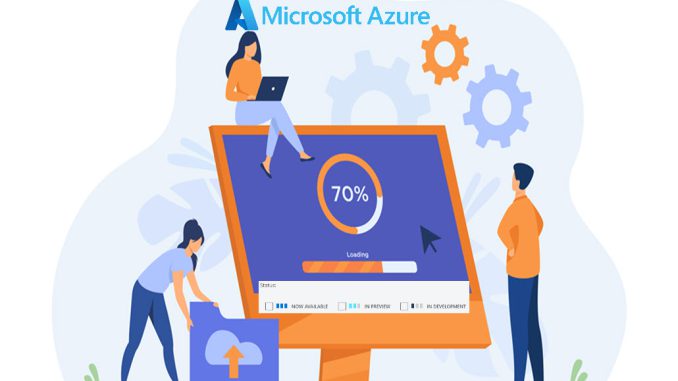
Microsoft Azure, being an constantly evolving, updating and changing environment, makes it difficult to sometimes follow all that happens around it. I will try to condense some of the Azure Announcements based on status – generally available, preview or update features.
Be aware that generally available features/updates might incur costs. Anything that is part of a public preview, does not incur any costs, but also does not have Service-Level Agreement (SLA) attached to it.
Last months article
Azure Announcements (July 2022)
General Availability Announcements
Temporary access pass for Azure Active Directory
Passwordless authentication methods, such as FIDO2 and Passwordless Phone Sign-in through the Microsoft Authenticator app, enable users to sign in securely without a password. Users can bootstrap Passwordless methods in one of two ways:
- Using existing Azure AD Multi-Factor Authentication methods
- Using a Temporary Access Pass (TAP)
Temporary access pass can be used to securely register passwordless methods such as phone sign-in, phishing resistant methods like FIDO2, and can even assist in Windows on-boarding (Azure AD Join and Windows Hello for Business). Temporary access pass makes recovery easier when you have lost or forgotten your strong authentication methods and need to sign in to register new authentication methods.
Additional information:
Configure Temporary Access Pass | Microsoft Docs
Azure Active Directory Authentication | Microsoft Docs
Export device data under an organization in Azure IoT Central
You can now apply a filter to limit exporting device data including telemetry, property changes, and device events from devices under an organization in your Azure IoT Central data exports.
Many integration scenarios build on the IoT Central data export feature. An IoT Central application can continuously export filtered and enriched IoT data. Data export pushes changes in near real time to other parts of your cloud solution for warm-path insights, analytics, and storage.
For example, you can:
- Continuously export telemetry, property changes, device connectivity, device lifecycle, and device template lifecycle data in JSON format in near real time.
- Filter the data streams to export data that matches custom conditions.
- Enrich the data streams with custom values and property values from the device.
- Transform the data streams to modify their shape and content.
Currently, IoT Central export data to:
Additional information:
Generally available: Export device data under an organization in Azure IoT Central
Azure SQL Database Hyperscale – Named Replicas
A named replica, just like an HA replica, uses the same page servers as the primary replica. Similar to HA replicas, there is no data copy needed to add a named replica.
The difference from HA replicas is that named replicas:
- Appear as regular (read-only) Azure SQL databases in the portal and in API (AZ CLI, PowerShell, T-SQL) calls;
- Can have database name different from the primary replica, and optionally be located on a different logical server (as long as it is in the same region as the primary replica);
- Have their own Service Level Objective that can be set and changed independently from the primary replica;
- Support for up to 30 named replicas (for each primary replica);
- Support different authentication for each named replica by creating different logins on logical servers hosting named replicas.
Additional information:
Azure SQL Database Hyperscale – Named Replicas feature is Generally Available (GA)
Hyperscale secondary replicas – Azure SQL Database | Microsoft Docs
Named Replicas FAQs: Azure SQL Database Hyperscale named replicas FAQ – Azure SQL | Microsoft Docs
Sample to enable OLTP read scale-out using Named Replicas: Azure-Samples (github.com)
VM Applications – Manage and deploy applications to VMs and VMSS
VM Applications are a resource type in Azure Compute Gallery (previous name: Shared Image Gallery) that simplifies management, sharing, and global distribution of applications for your virtual machines.
With VM Applications, you can now define application packages, replicate, share and deploy them automatically to your VMs and Virtual Machine Scale Sets using ARM templates, the portal, CLI, or PowerShell. Add an application to a VM or VMSS at creation, or add, remove, and update applications on existing resources.
This feature provides flexibility and simplicity in managing, sharing, and deploying applications. Some features include:
- Support for pre-deployment applications settings, or a default configuration across all deployments.
- Deploy VM Apps to VM or VMSS across subscriptions using IAM.
- Package your applications and configuration in either page blobs or block blobs and replicate them across the desired regions.
- Proxies all packages to prevent direct access to any of the replicas from the VM.
- Ability to auto select “latest” available VM Apps version when installing an application.
Additional information:
General availability: VM Applications – Manage and deploy applications to VMs and VMSS
Store and share resources in an Azure Compute Gallery | Microsoft Docs
VM Applications overview | Microsoft Docs
Virtual machine restore points
Business continuity and disaster recovery (BCDR) solutions are primarily designed to address site-wide data loss. Solutions that operate at this scale will often manage and execute automated failovers and failbacks across multiple regions. Azure VM restore points can be used to implement granular backup and retention policies.
VM restore points support application consistency for VMs running Windows operating systems and support file system consistency for VMs running Linux operating system. To get an application consistent restore point, the application running in the VM needs to provide a VSS writer (for Windows), or pre and post scripts (for Linux) to achieve application consistency.
Additional information:
Generally available: Virtual machine restore points
Overview of VM restore points | Microsoft Docs
Introducing Virtual Machine restore points – a simpler way to protect Azure workloads | Tech Community Blogs
Preview Features Announcements
Multiple backups per day for Azure Virtual Machines
Azure Virtual Machine Backup enables you to create an enhanced policy to take multiple snapshots a day. Understanding your need to protect mission-critical workloads in Azure Virtual Machines, Azure Backup now previews low recovery point objective (RPO) to as low as four hours.
Additional information:
Public preview: Multiple backups per day for Azure Virtual Machines
Back up an Azure VM using Enhanced policy | Microsoft Docs
Share images across subscriptions and tenants with new Compute Gallery feature
Direct shared gallery is a new feature of Azure Compute Gallery that simplifies the sharing of resources with all users within the same subscription, same tenant, different subscription and different tenants without the need for any auxiliary tokens. When the gallery is shared with a target subscription or tenant, all users in the subscription or tenant will have read-only access to the gallery and they can create a VM or a VM scale set on the target subscription.
Additional Information:
Public preview: Share images across subscriptions and tenants with new Compute Gallery feature
Share a gallery with subscriptions or tenants (preview) | Microsoft Docs
Azure Stack HCI version 22H2
This year’s release for Azure Stack HCI, named “22H2”, is now available for evaluation in the preview channel. To obtain this preview, install the current version of Azure Stack HCI on a secondary (non-production) cluster, join the preview channel, and apply the free over-the-air update to version 22H2. Do not use this preview for production deployments. Version 22H2 includes enhancements in addition to delivery updates, making this update significantly faster to install.
Additional information:
What’s new for Azure Stack HCI at Microsoft Inspire 2022 | Tech Community Blogs
Public preview: Azure Stack HCI version 22H2
Azure Load Testing – additional metrics for pass/fail criteria
Azure Load Testing now supports defining pass/fail criteria on one of the multiple requests in the test plan which enables users to define different thresholds for different requests. Client metrics including requests per second and latency are now supported in addition to the previously available average response time and error percentage.
The pass/fail criteria can also be defined using aggregate functions (percentile, minimum, maximum etc.) on client metrics. For example, the pass criterion for a test can be configured as ’99th percentile response time should be less than 10 seconds’.
Additional information:
Define pass/fail criteria for load tests by using Azure Load Testing Preview | Microsoft Azure
Azure Load Testing service (ITuziast Article)



Be the first to comment